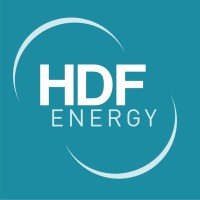Aramco securing Asia future hydrogen needs
Aramco is building its hydrogen portfolio over its existing energy credentials.

Saudi Arabia’s Aramco (the global oil giant) and Japan’s Eneos Corp (an integrated energy company) has agreed to explore potential for establishing blue hydrogen and blue ammonia supply chain, H2Bulletin reports.
Both companies plan to study the potential for making blue hydrogen and blue ammonia in Saudi Arabia from natural gas and liquefied petroleum gas (LPG) while capturing carbon emission. As part of the agreement, both companies will also assess hydrogen chemical carriers, including ammonia and methylcyclohexane (MCH), to ship hydrogen from Saudi Arabia to Japan and elsewhere. Eneos also plans to explore the potential of developing a hydrogen network encompassing importing hydrogen to Japan and then supplying to end-users, including power stations.
Aramco is also looking to explore its partnership opportunities with China. Last week, Amin Nasser, Aramco CEO, said the company is seeking to develop its relationship with China in research in hydrogen and ammonia production from natural gas. The company has also got engaged recently in developing fuel cell technology and hydrogen business with Korea.
Aramco has a strong foothold in the global energy market, which can support its ambition of becoming one of the largest suppliers of hydrogen. It shipped the world’s first shipment of blue ammonia from Saudi Arabia to Japan on 27th September 2020 for application in a power station. It was a pilot project conducted by the Institute of Energy Economics, Japan (IEEJ) and Aramco in partnership with Saudi Basic Industries Corp. (SABIC). The captured CO2 set for use in methanol production at SABIC’s Ibn-Sina facility and enhanced oil recovery at Saudi Aramco’s Uthmaniyah field. Mitsubishi Corporation, which represented IEEJ’s study team, worked with SABIC to monitor the transport logistics in partnership with JGC Corporation and UBE Industries. Japan’s Ministry of Economy, Trade and Industry also backed the project.
Shipping hydrogen is one of the key parts in developing the hydrogen supply chain. On 25th March 2021, the Tokyo metropolitan government decided to wave the port entry fee at Yokohama, Kawasaki and Tokyo for ships powered by LNG and hydrogen. The fee waiver is set to remain effective until 31st March 2026. The exemption does not include ammonia.
Meanwhile, CMB and Japan-based Tsuneishi Facilities & Craft (TFC) are working together on building a dual fuel hydrogen diesel internal combustion engines, the HydroBingo. This will be the world’s first hydrogen-powered ferry that is expected to be delivered for deployment next month in Japan’s Seto inland sea.
